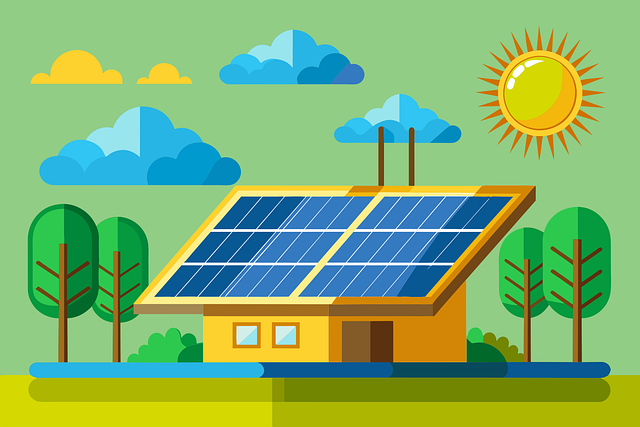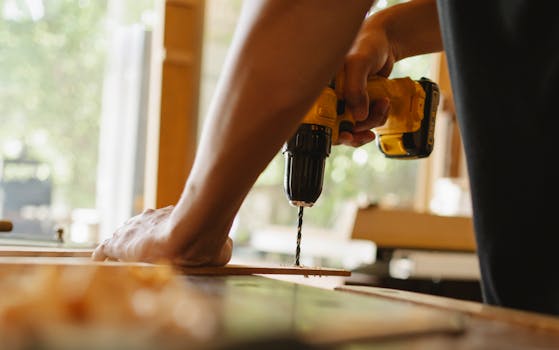“Professional vs. DIY Solar Inverter Installation: Expertise for Efficiency, or Hands-On Savings?”
When considering solar energy systems, one of the critical decisions homeowners face is whether to hire a professional for solar inverter installation or to undertake a DIY approach. Professional installation offers expertise, compliance with local regulations, and warranties, ensuring a reliable and efficient setup. In contrast, DIY installation can save costs and provide a sense of accomplishment, but it requires a solid understanding of electrical systems, safety protocols, and potential risks. This introduction explores the advantages and disadvantages of both methods, helping homeowners make informed choices based on their skills, budget, and energy needs.
Cost Comparison: Professional Installation vs. DIY Solar Inverter Setup
When considering the installation of a solar inverter, one of the most significant factors to evaluate is the cost associated with professional installation versus a do-it-yourself (DIY) approach. Understanding the financial implications of each option can help homeowners make informed decisions that align with their budgets and energy needs.
To begin with, professional installation typically involves hiring a licensed contractor who specializes in solar energy systems. This option often comes with a higher upfront cost, which can range from several hundred to several thousand dollars, depending on the complexity of the installation and the specific inverter model chosen. However, this expense includes not only the labor but also the expertise that professionals bring to the table. They are well-versed in local regulations, permitting processes, and safety standards, which can save homeowners from potential legal issues or costly mistakes down the line. Moreover, professional installers often provide warranties on their work, offering peace of mind that the system will function correctly and efficiently.
On the other hand, a DIY solar inverter installation can appear to be a more budget-friendly option at first glance. Homeowners can save on labor costs, which can be substantial, especially for larger systems. The primary expenses in a DIY setup typically include the inverter itself, mounting hardware, and any necessary electrical components. However, while the initial savings may be appealing, it is crucial to consider the hidden costs that can arise from a DIY approach. For instance, if a homeowner lacks the necessary skills or knowledge, they may encounter challenges that require hiring a professional to rectify mistakes, ultimately negating any initial savings. Additionally, improper installation can lead to inefficiencies in the system, resulting in higher energy costs over time.
Furthermore, it is essential to factor in the time commitment associated with a DIY installation. While some homeowners may relish the challenge of installing their solar inverter, others may find the process time-consuming and frustrating. This time investment can translate into lost productivity or leisure time, which is another cost that should not be overlooked. In contrast, professional installers can typically complete the job more quickly and efficiently, allowing homeowners to start reaping the benefits of solar energy sooner.
Another aspect to consider is the potential for financial incentives. Many regions offer tax credits, rebates, or other financial incentives for solar installations, which can significantly offset costs. However, these incentives may be contingent upon using licensed professionals for installation. Therefore, opting for a DIY approach could mean missing out on these valuable savings, further complicating the cost comparison.
In conclusion, while the allure of saving money through DIY solar inverter installation is understandable, it is essential to weigh the potential risks and hidden costs against the benefits of professional installation. The expertise, efficiency, and peace of mind that come with hiring a qualified contractor can often justify the higher initial expense. Ultimately, homeowners must assess their own skills, the complexity of the installation, and their long-term energy goals to determine which option aligns best with their financial and practical needs. By carefully considering these factors, individuals can make a more informed decision that will serve them well in their journey toward sustainable energy.
Safety Considerations: Risks of DIY Solar Inverter Installation

When considering the installation of a solar inverter, one of the most critical aspects to evaluate is safety. While the allure of a do-it-yourself (DIY) project can be tempting, particularly in terms of cost savings and personal satisfaction, the risks associated with DIY solar inverter installation cannot be overlooked. Understanding these risks is essential for anyone contemplating this route, as improper installation can lead to serious safety hazards.
First and foremost, working with electrical systems inherently involves risks. Solar inverters convert direct current (DC) from solar panels into alternating current (AC) for use in homes, and this process requires a solid understanding of electrical systems. Without proper knowledge, individuals may inadvertently create unsafe conditions, such as short circuits or electrical fires. Moreover, the high voltage associated with solar energy systems can pose a significant danger. A lack of experience in handling high-voltage equipment can lead to severe injuries or even fatalities.
In addition to electrical hazards, there are also structural safety concerns to consider. Solar inverters are often mounted on rooftops or other elevated structures, which introduces the risk of falls. Without the proper safety equipment and training, a DIY installer may find themselves in precarious situations, leading to potential injuries. Professional installers are trained to navigate these risks, utilizing safety harnesses and other protective gear to ensure their safety while working at heights.
Furthermore, the installation process itself can be complex, involving various components such as wiring, grounding, and circuit breakers. Each of these elements must be installed correctly to ensure the system operates safely and efficiently. A DIY installer may overlook critical steps or fail to adhere to local building codes and regulations, which can result in unsafe installations. In contrast, professional installers are well-versed in these requirements and can ensure that the system meets all necessary standards, thereby minimizing risks.
Another significant consideration is the warranty and insurance implications of DIY installations. Many manufacturers require professional installation to maintain warranty coverage on their products. If a DIY installation fails or causes damage, the homeowner may find themselves responsible for costly repairs or replacements. Additionally, if an accident occurs during a DIY installation, the homeowner may face liability issues that could have been avoided with professional help. Professionals typically carry liability insurance, which protects both the installer and the homeowner in the event of an accident.
Moreover, the long-term performance of the solar inverter can be compromised by improper installation. A poorly installed inverter may not function efficiently, leading to decreased energy production and increased wear and tear on the system. This inefficiency can result in higher energy costs and a reduced return on investment, negating the initial savings achieved through a DIY approach.
In conclusion, while the idea of installing a solar inverter oneself may seem appealing, the associated safety risks are significant. From electrical hazards and structural dangers to warranty implications and long-term performance issues, the potential pitfalls of DIY installation far outweigh the benefits. Engaging a professional installer not only ensures compliance with safety standards and regulations but also provides peace of mind that the system will operate safely and efficiently for years to come. Ultimately, investing in professional installation is a prudent choice that prioritizes safety and reliability in the pursuit of renewable energy solutions.
Time Investment: How Long Each Method Takes
When considering solar inverter installation, one of the critical factors to evaluate is the time investment required for each method: professional installation versus a do-it-yourself (DIY) approach. Understanding the time commitment involved in both options can significantly influence your decision-making process, especially when balancing the urgency of energy needs with the desire for cost savings.
Professional installation typically involves a well-defined timeline that can vary based on several factors, including the complexity of the system, the size of the installation, and the availability of the installation team. Generally, once you have selected a reputable solar installation company, the process begins with an initial consultation. This meeting usually takes a few hours, during which the professionals assess your property, discuss your energy needs, and provide a detailed proposal. Following this, the actual installation can take anywhere from one to three days, depending on the system’s size and the number of panels being installed. This timeframe includes not only the physical installation of the inverter and solar panels but also the necessary electrical work and inspections required to ensure compliance with local regulations. Moreover, professional installers often handle the permitting process, which can add additional time but ultimately streamlines the experience for the homeowner.
In contrast, a DIY solar inverter installation can appear appealing due to the potential for cost savings and the satisfaction of completing a project independently. However, it is essential to recognize that the time investment for a DIY approach can be significantly greater than anticipated. First, the research phase can be quite extensive, as you will need to familiarize yourself with solar technology, local regulations, and safety standards. This phase can take several days or even weeks, depending on your prior knowledge and experience with electrical systems. Once you have gathered all necessary information, the actual installation process can take anywhere from a few days to a couple of weeks. This variability is largely due to the learning curve associated with the installation process, as well as the potential for unforeseen challenges, such as electrical issues or structural concerns that may arise during the installation.
Furthermore, while DIY installations can be completed at your own pace, it is crucial to consider the potential for delays. For instance, if you encounter difficulties or require additional materials, the project timeline can extend significantly. Additionally, if you lack experience, you may need to consult online resources or seek advice from more knowledgeable individuals, which can further prolong the process. In contrast, professional installers bring expertise and efficiency to the table, often completing installations in a fraction of the time it might take an inexperienced individual.
Ultimately, the choice between professional and DIY solar inverter installation hinges on your priorities regarding time investment. If you are looking for a quick and efficient solution, professional installation is likely the better option, as it minimizes the time spent on the project while ensuring a high-quality outcome. On the other hand, if you are willing to invest more time for the sake of learning and potential cost savings, a DIY approach may be suitable, provided you are prepared for the challenges that may arise. In either case, understanding the time commitment involved is essential for making an informed decision that aligns with your energy goals and lifestyle.
Performance and Efficiency: Professional vs. DIY Solar Inverter Systems
When considering the installation of a solar inverter, one of the most critical factors to evaluate is the performance and efficiency of the system, which can vary significantly between professional installations and DIY approaches. Understanding these differences is essential for homeowners and businesses looking to maximize their solar energy investment.
Professional solar inverter installations typically benefit from the expertise and experience of trained technicians. These professionals are well-versed in the intricacies of solar technology, including the specific requirements of various inverter models and the nuances of local regulations. Their knowledge allows them to optimize the installation process, ensuring that the inverter is correctly sized and configured for the specific solar panel system. This attention to detail can lead to enhanced performance, as a properly installed inverter will operate more efficiently, converting a higher percentage of solar energy into usable electricity.
In contrast, DIY installations, while appealing for their cost-saving potential, often lack the same level of precision. Homeowners may not have access to the same resources or knowledge as professionals, which can result in suboptimal placement or configuration of the inverter. For instance, if the inverter is installed in a location that is not adequately ventilated, it may overheat, leading to reduced efficiency and a shorter lifespan. Furthermore, without a thorough understanding of electrical systems, DIY installers may inadvertently create safety hazards or violate local codes, which can have serious implications for both performance and liability.
Moreover, professional installers often have access to advanced tools and technology that can enhance the installation process. For example, they may use software to simulate energy production and identify the best configuration for the solar system. This level of analysis can significantly improve the overall efficiency of the system, as it allows for adjustments that a DIY installer might overlook. Additionally, professionals are typically familiar with the latest advancements in solar technology, ensuring that the inverter selected is the most efficient model available, which can further boost performance.
Another important consideration is the warranty and support that comes with professional installations. Many reputable solar companies offer warranties on both the equipment and the installation work itself. This means that if any issues arise, homeowners can rely on the expertise of the professionals to resolve them quickly and effectively. In contrast, DIY installations often come with limited or no warranty, leaving homeowners to navigate any problems on their own. This lack of support can lead to increased downtime and decreased efficiency, as any necessary repairs or adjustments may take longer to address.
In addition to these factors, it is essential to consider the long-term implications of installation choices. While DIY installations may save money upfront, the potential for decreased performance and efficiency can lead to higher costs over time. A poorly installed inverter may not only underperform but could also lead to increased energy bills, negating any initial savings. On the other hand, a professional installation, while more expensive initially, can provide peace of mind and assurance of optimal performance, ultimately resulting in greater energy savings and a more reliable system.
In conclusion, while DIY solar inverter installation may seem like an attractive option for those looking to cut costs, the potential drawbacks in terms of performance and efficiency cannot be overlooked. Professional installations offer a level of expertise, support, and reliability that can significantly enhance the overall effectiveness of a solar energy system. Therefore, for those serious about maximizing their solar investment, opting for professional installation is often the most prudent choice.
Q&A
1. **Question:** What are the advantages of professional solar inverter installation?
**Answer:** Professional installation ensures compliance with local codes, safety standards, and optimal system performance, often backed by warranties and guarantees.
2. **Question:** What are the potential risks of DIY solar inverter installation?
**Answer:** DIY installation can lead to improper wiring, safety hazards, code violations, and potential damage to equipment, which may void warranties.
3. **Question:** How does the cost compare between professional and DIY solar inverter installation?
**Answer:** Professional installation typically incurs higher upfront costs due to labor and expertise, while DIY can save money but may lead to additional expenses if mistakes occur.
4. **Question:** What level of expertise is required for DIY solar inverter installation?
**Answer:** DIY installation requires a good understanding of electrical systems, local regulations, and solar technology; lacking this knowledge can result in significant issues.
Conclusion
In conclusion, while DIY solar inverter installation can save costs and provide a sense of accomplishment, it often lacks the expertise and safety assurance that professional installation offers. Professionals ensure compliance with local regulations, optimize system performance, and provide warranties and support, making their services a worthwhile investment for most homeowners. Ultimately, the choice between professional and DIY installation should consider factors such as technical skill, safety, budget, and long-term system reliability.




